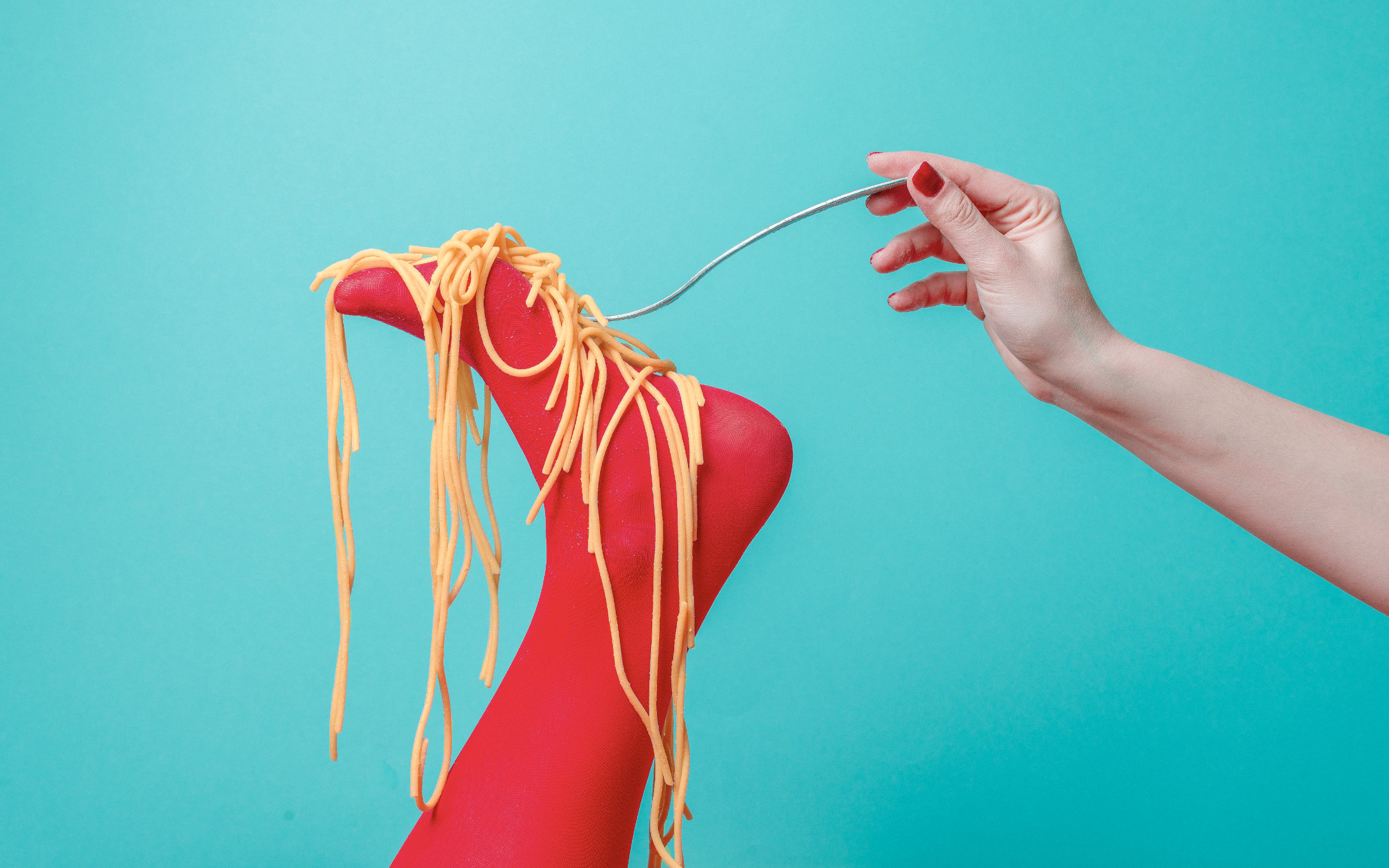The New Gastronome
The Aesthetics of Disgust
In Gastronomy
by Marina Castañeda
by Marina Castañeda

Homo sapiens is an aesthetic being; about 200,000 years ago, a sensory concern began that eventually led these hominids to make drawings in their caves or to create sound instruments. A sensitivity to the choice of certain shapes, aromas or flavors over others arose. Aesthetics is the reason why today we have feather beds or napkins on the table. In the eighteenth century, the term aesthetics was born as a specific discipline by the hand of Gottlieb Baumgarten, who considered aesthetics a distinctive category of knowledge. His main objective was the study of sensitivity and the relationship between art and beauty and how these concepts have been modified by the social, political, economic and ecological factors of each era. The word aesthetics derives from modern Latin aestheticus and previously from Greek aisthētikós, meaning “perception or sensibility” through the senses. Aesthetics has built cultures and led to how we judge, choose, cook and eat food. What today is a product with a high market value, perhaps in the past, was considered objectionable, as in the case of lobster and how this animal went from being slave food to a luxury product.
I am sorry to disappoint you if you think I will talk about beauty, attractiveness or exquisiteness in the following lines. Although I have pursued these concepts most of my life as a designer and gastronome, this article is about what we humans have detected as offensive to our senses, the most feared concept and the one nobody wants to talk about: disgust. And although disgust is the most complicated to find a positive connotation among all the existing emotions, we will see how it can become an object of aesthetic appreciation.
A. D V. E. R. T. I. S. I. N. G
Disgust belongs to the great family of emotions that generate aversion. Some stimuli attract us, and others repel us. From an evolutionary perspective, and following Charles Darwin’s definition, disgust serves as a survival mechanism. This emotion works for the Homo sapiens as a guardian of the mouth or stomach, warning us of what can harm or infect us. Beyond its role in bodily protection, It’s a curious aspect of human nature that so many foods have the ability to elicit feelings of disgust and revulsion, despite lacking any clear indication of danger or toxicity. Perhaps, disgust also encompasses cognitive, social, and cultural dimensions that must be explored if we are to understand how disgust functions in the construction of our food choices and gastronomic experiences.
We all recognize the disgusting face, also known as The Gape, and if not, I invite the reader to imagine a delicious soup, and in the first spoonful, there is a cockroach. Naturally, we immediately stick out our tongue and lower lip and push our heads back. However, Paul Ekman, an academic whose cross-cultural research focuses on the relationship between emotions and facial expressions, suggests a global face for disgust exists. This revelation suggests that regardless of cultural, social, or linguistic differences, the emotion of disgust is a common human experience. Whether it is elicited by a foul odor, a putrid taste, or a repulsive sight, disgust is an emotion that transcends borders and unites us all in our shared humanity.
 Photo ©Marina Castañeda
Photo ©Marina Castañeda
Returning to the example of the soup and the cockroach, a truly extraordinary characteristic of disgust is its imaginary capacity to evoke powerful emotions even in the absence of a real object. You can really feel the disgust by thinking about the soup without the need for it to exist. This imaginary capacity of disgust is a testament to its profound impact on our psychological and emotional states. So, if disgust is something that all human beings share and is an emotion that we all feel, why are there certain things that disgust us in the West and not in the East? Or does that disgust me and not the others?
As social creatures, we are shaped by the cultural context in which we grow up, and the things that we find disgusting are no exception. While there are undoubtedly universal elements of disgust that transcend cultural boundaries – such as waste products from our bodies like feces, urine, and mucus – there are also many other variations of what we consider repulsive or taboo across different societies. For instance, the relationship between disgust and lower-order animals, such as insects as food, differs according to a specific place. While in Western societies, the consumption of insects is generally considered taboo or even repulsive, in some other cultures, insects are considered a delicacy and are consumed as a regular part of the diet.
Over time, how we prepare, cook, eat, and share food have become deeply ingrained in our cultures, and we use symbols to reflect our beliefs, values, and traditions. Coining symbols to food is a way of transforming the common into something of greater or lesser interest. For example, in the Catholic faith, the host – a thin, round unleavened bread – is transformed into a sacred good that symbolizes the body of Christ. In Western society, it’s interesting how certain foods are perceived as repulsive, dangerous, and impure, even though they may not harm our health. Take, for instance, non-noble animal parts like cow hearts, consumed as food in many cultures around the world yet are often met with disgust in the West. Similarly, the idea of eating meat from loyal companions like dogs is repugnant to many, even though it is a common practice in some cultures. It’s fascinating how our perceptions of what is “acceptable” or “disgusting” can vary greatly across different cultures and societies.
In Europe, there are established rules of table behavior that are widely recognized and adhered to. Actions such as placing our feet on the table or licking a plate are deemed inappropriate, as they evoke our primal, animalistic nature. We often experience a sense of offense and disgust when we violate these social norms or limits. Anthropologist and author Mary Douglas explains in her book “Purity and Danger” that the feeling of uncleanness or impurity – that which offends us – arises when an “object” is out of place or where it doesn’t belong. In this way, our cultural constructions of cleanliness and purity are closely tied to our social practices and conventions. By understanding the role that disgust plays in shaping our cultural identities and social interactions, we can gain a deeper appreciation for the diversity of human societies and the myriad ways in which we make sense of the world around us. For example, food has become more than just a source of sustenance; it symbolizes our identity and reflects our relationships with others and the natural world. Behind this sociocultural dimension are the most important challenges of our time: climate change, deforestation, hunger, inequality, waste and disease.
Disgust, like joy, surprise, or sadness, is an emotion. However, unlike these other emotions, we have never romanticized or idealized the experience of disgust. Kant, at the end of the 18th century, expressed, “Only one kind of ugliness cannot be depicted in conformity with nature without ruining all aesthetic complacency and, with it artistic beauty: it is the ugliness that inspires disgust”. This disdain for disgust to be reconciled with beauty does not happen with the rest of the emotions. For example, in fear, we find a dark beauty, a feared beauty that we have categorized as the Sublime. Tragedy is another style or genre where the horror of loss and suffering becomes the object of appreciation.
In recent decades, this emotion has begun to gain importance. The search for a positive connotation of disgust has become a focus of study for many researchers, as well as a source of inspiration for artists looking to create meaningful works. In fact, the aesthetics of disgust and other negative emotions are currently experiencing a renaissance, with many artists incorporating these emotions into their works as an essential part of their beauty. This can be seen in artworks such as The Beheading of John the Baptist by Damien Hirs and Resemblage by David Henry Brown. The intersection of art and research on disgust opens new perspectives for exploring and understanding this complex emotion and challenges traditional notions of beauty and aesthetics. However, I wonder, what about gastronomy? Is it possible to simultaneously find pleasure in eating food that we find disgusting?
The experience and taste of what one might consider disgusting can vary in many ways. It is not only a matter of sensory gratification, but it can also be a matter of intellectual or aesthetic satisfaction in gastronomy. The dish “Podredumbres Nobles”, served at the restaurant Mugaritz in Spain, is an example of how it is possible to challenge our preconceived notions of what is considered disgusting or repulsive in a gastronomic experience. The dish consists of an apple covered with a layer of mold, a symbol of decay and rot. By presenting this dish, Mugaritz is pushing the boundaries of our culinary norms and inviting us to question our assumptions about what is acceptable to eat. The dish not only showcases the restaurant’s culinary creativity and innovation but also encourages us to be more open-minded and adventurous in our own culinary experiences.
If you list the norms and values whose transgression produces disgust, he would realize how essential this emotion is to avoid becoming uncouth, savage and disgusting. Therefore, it is necessary to reconsider and expand our understanding of the concept of disgust in order to transcend the limited kingdom of what is considered right, beautiful, or palatable. Reflecting on the aesthetics of food is an ecological act because it encourages us to consider the social, cultural, and environmental factors that influence our food choices and habits. By exploring the symbolic meanings and associations we attach to different foods, we can become more aware of the broader systems and structures that shape our food culture. This awareness can inspire us to adopt more sustainable and responsible practices in the production, distribution, and consumption of food, thereby promoting the planet’s and its inhabitants’ health.
The opinions expressed in the articles of this magazine do not necessarily represent the views of The New Gastronome and The University of Gastronomic Sciences of Pollenzo.
Cover photo ©Aarón Gómez Figueroa.